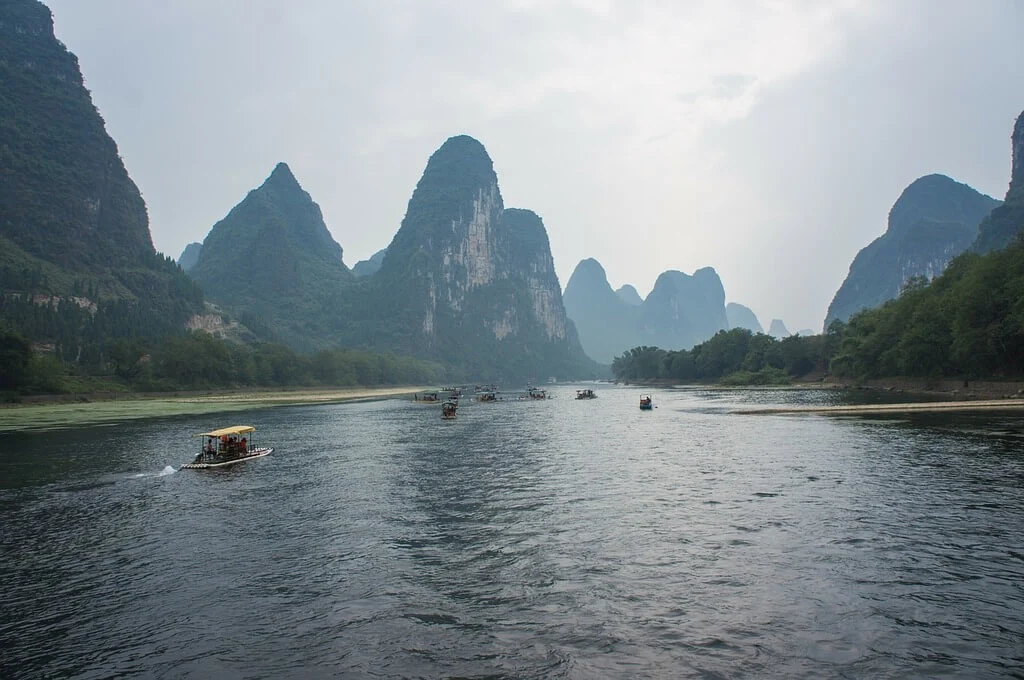The Li River and the surrounding karst mountains are some of the most iconic natural landscapes in China. They are located in the Guangxi Zhuang Autonomous Region in southern China and are renowned for their breathtaking beauty and unique geological formations.
 |
| Li River and Karst Mountain China |
Li River
The Li River (Li Jiang in Chinese) stretches for about 83 kilometers (52 miles) through the Guangxi region, connecting the city of Guilin to the town of Yangshuo. It is famous for its stunning limestone karst landscape, crystal-clear waters, and picturesque scenery. The river is lined with lush greenery, traditional fishing villages, and numerous limestone peaks that create a surreal and enchanting atmosphere.
 |
| Li River and Karst Mountain China |
Karst Mountains
The karst mountains in the region are a result of the unique geological processes that have taken place over millions of years. These mountains are characterized by their cone-like peaks, sharp cliffs, and distinct formations. The erosion of limestone over time has created these remarkable landscapes. Some of the karst formations resemble animals, objects, or legendary figures, and they have inspired numerous poems, paintings, and cultural references in Chinese history.
 |
| Li River and Karst Mountain China |
Scenic Cruises and Activities
One of the most popular ways to experience the beauty of the Li River and the karst mountains is by taking a scenic boat cruise from Guilin to Yangshuo. The journey offers breathtaking views of the towering karst peaks, traditional fishing scenes, and rural landscapes. The best times to visit are during the spring and autumn months when the weather is pleasant and the scenery is at its finest.
Yangshuo, the endpoint of many Li River cruises, is a charming town nestled among the karst mountains. Visitors can explore the town, and its local markets, and enjoy outdoor activities such as cycling, rock climbing, and hiking to further immerse themselves in the natural beauty of the region.
Cultural Significance
The Li River and karst landscapes have not only captivated travelers but have also inspired Chinese literature, art, and culture for centuries. Many ancient poets and painters have depicted these landscapes in their works. The imagery of mist-covered mountains, meandering rivers, and unique rock formations has become synonymous with the ethereal beauty of traditional Chinese landscapes.
In conclusion, the Li River and Karst mountains in China's Guangxi region are a natural wonder that continues to draw travelers and artists alike. The unique geological formations and stunning scenery have left an indelible mark on Chinese culture and have become an essential part of China's natural heritage.